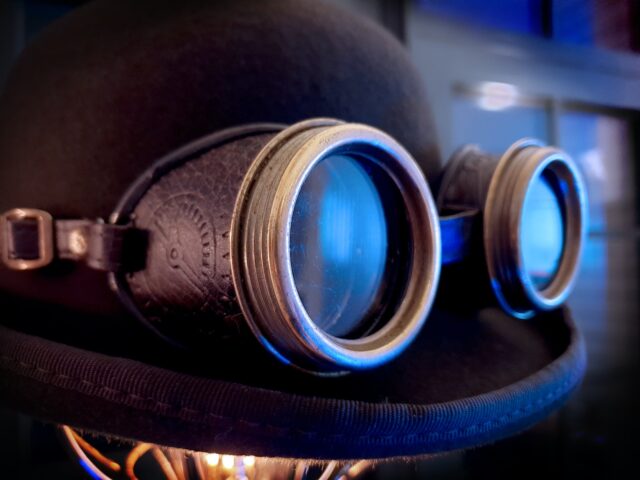
Steampunk is the name of a genre of fiction and the subculture associated with it; it’s a subgenre of science fiction that incorporates retro-futuristic technologies and aesthetics, often inspired by 19th-century steam-powered industrial machinery. It’s an interesting thought – without the transistor and, therefore, the microchip, we could well be using primarily mechanical technology today. It is that “what if” – the potential of an alternate history where steam power has stayed in mainstream use, that drives many of the stories in the steampunk genre.
Steampunk science fiction has always been a somewhat niche genre, but it only takes a single breakout hit in movie theatres for something like this to take off with the masses. It’s not just books and film, either; video games have always been a favorite way to tell Steampunk stories – the 1993 game “The Chaos Engine” by The Bitmap Brothers was such a hit that it was eventually ported to more than a dozen different formats. One of the most popular slot machine franchises is also heavily focused on the steampunk aesthetic – check out this Money Train 3 slot demo for a beautiful example of the art style.
Before Steampunk
Steampunk is heavily influenced by 19th-century fiction by authors such as H.G. Wells, Jules Verne, or Edward S. Ellis and will often seek to imitate the style of those authors to give a feeling of authenticity. Interestingly, many of the most significant early steampunk stories were written at a time when the genre did not have a name, including the 1959 novel “Titus Alone,” which many regards as being the first true steampunk story.
Later hit stories of the genre, such as The Warlord of the Air, were heavily influenced by Titus Alone, as well as the 1985 movie “Brazil,” which is considered to be one of the earliest cinematic steampunk works. On yet another branch of the tree, artist Remedios Varo’s paintings often combine several themes from the Victorian era, including steam-powered machinery, which has led to him being called the first steampunk artist.
Where does the term “Steampunk” come from?
The 1960s and 1970s were highly active years for steampunk stories, but the earliest recorded use of the term did not appear until the 1980s. This means that a lot of those earlier works now considered to be seminal to the genre were retroactively given the label of steampunk decades after they were first released.
The 1980s were a time of heavy technological advancement, too, of course, which creates an interesting dichotomy between the rise of steampunk stories and the rapid development of the microchip. Many people believe that “steampunk” was originally intended to be a slightly tongue-in-cheek variant of “cyberpunk,” a label given to those who were interested in alternative computing technologies.
Relationship to Retrofuturism
Ask a group of people what they like most about the steampunk aesthetic, and many of them are likely to tell you that it is the intricate machinery that fascinates them the most. A computer is just a box full of opaque circuits and chips, whilst the machines featured in steampunk work use cogs, gears, spinning motors, and axels.
Whilst modern computing seeks to make everything as small as possible; steampunk machines must be built on a macro scale in order for them to accomplish real work. These days, almost nothing is built in this way, so it makes sense that people who did use some mechanical technology in their youth – even if it was just a humble VCR – may be drawn to steampunk.
At the same time, steampunk should not be confused with retrofuturism itself. Some scholars will tell you that steampunk implements aspects of retrofuturism, whilst others will tell you that retrofuturism is itself a strand of steampunk; when the two things are often considered as one in this way, it can be easy to mistake them for being the same thing.
However, retrofuturism encompasses a great deal more than imaginary steam-powered technology, so it deserves to be explored separately. We’re not taking anything away from steampunk when we say this, of course – it’s a fascinating genre that is likely to continue to grow in popularity, born out of a time when everybody hoped technology would continue to make our lives better. It’s hard to argue with that.








